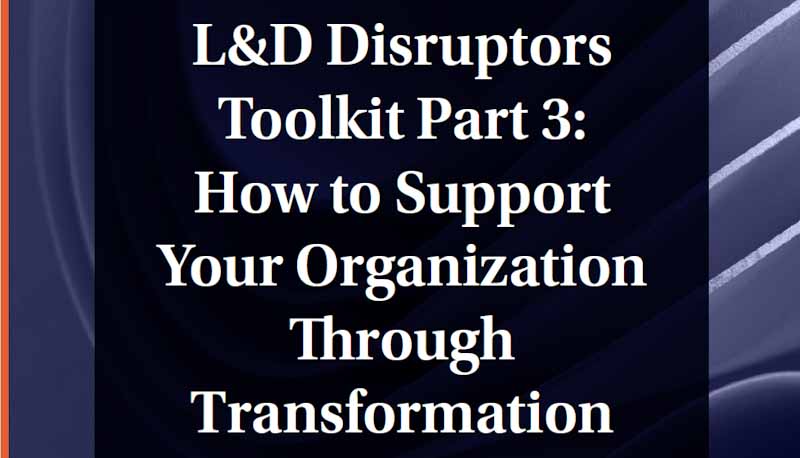Enterprise Learning’s New Panacea

There are lots of things about personalized learning that we love. But it's not an answer to all of online learning's problems.

The story of web-based learning, from the first recognized online program at the Open University 20 years ago to MOOCs and personalized learning, is a story of consumption. The majority of online learning provides educational content to be consumed by largely bored and disengaged audiences, leading to the inevitable test that most learners could’ve taken without being subjected to the tedium of the preceding learning experience. There has been huge improvement in the interaction between learner and content. But the social aspect of learning, the discussions, debates, and exchanges between learners — which we put so much emphasis on in modern classroom learning — is almost entirely absent from web-based learning. And it’s a problem inherent in the newer personalized learning platforms that claim to cure many of the ills of old online learning.
Evidence of our failure to create truly social online learning experiences can be found in the subject areas that are and are not being successfully taught online. We have seen successful online learning in subjects such as math via platforms like the Khan Academy and Knewton, and coding via companies like Codecademy and Treehouse. These subjects require less social interaction to be taught well, and there are definitive right answers, which can be memorized from static content and applied to tests or projects. We have seen far less success in subjects like management, strategy, and the social sciences — highly contextual subjects where there is no definitive correct answer and which require discussion and debate for positive learning outcomes.
Why have we largely failed to make social experiences a core component of online learning when we’ve had social technology for over a decade?
The wrong problem
To find an answer, we need to look back to the problem that online learning was originally trying to solve: access. From the Open University VSS program in 1994 to the explosion in MOOCS and personalized learning in the past few years, online learning has always been about access. Access for more people to more content when then they want it. But anytime, anywhere access to just the content you want makes effective social interaction becomes almost impossible.
The problem that online learning is attempting to address needs to be re-framed from one of access to one of effectiveness. How do we create the structures and environments on the web that are conducive to effective learning?
The return of the cohort
There are many different answers to this question. But if we accept that social interaction is key to teaching certain subjects and narrow the problem to one of how we can create effective social learning experiences on the web, then one thing matters more than anything else: cohorts.
Learning in groups has long been a feature of effective learning experiences and a core metric for measuring the effectiveness of academic institutions. Faculty-to-student ratio is a key measurement used to rate the effectiveness of institutes of higher education. The QS World Universities Ranking attributes 20% of their overall assessment to faculty-student ratio, while the Times Higher Education World University Rankings assigns teaching quality, of which faculty-student ratio is one of the most important factors, 30% of their overall assessment.
And while there is some disagreement as to the optimum class size in k-12 education, it is hard to find any argument or research in favor of very large classes. Learning in relatively small groups is unanimously considered hugely beneficial to learning outcomes. And, in the world of management, in which people skills are of vital importance, anonymous, isolated learning seems totally irrelevant.
In the rush to make web-based learning “open,” and provide access to as much content as possible, we seem to have lost sight of the importance of group learning and optimum group size. As MOOCs and many online management courses are proving, “open” doesn’t mean much if the learning outcomes are bad.
To improve learning outcomes, especially in those subjects that are difficult to teach on the web, we need to introduce the cohort to online learning. At the same time, our idea of what makes effective cohort-based learning needs to be revised for the online world.
In our experiments with cohort-based online learning at Nomadic, we’ve started to see some indication of what it should look like. Here are three lessons we’ve learned. It’s by no means a definitive answer, but it’s a start.
1. The cohort experience should be deeply integrated
Tacking on a cohort element to a web-based experience in the form of a final project or discussion forum is sub-optimal. Everything learners do should happen in their cohort. They should interact with their cohort as they move through the learning content, they should compete within the cohort, and they should be assessed against the performance of their peers in the cohort. That’s not to say interactions with much larger groups shouldn’t happen. They should. But the primary experience needs to happen within the cohort, with additional opportunities for cross-cohort interaction. Not the other way around.
2. Make it structured but still flexible
Anytime, anywhere access is a huge advantage of online learning. Cohort-based online learning shouldn’t lose that flexibility. Effective cohort-based online learning should set a fixed schedule for sections of a program to be completed. Everyone in the cohort is expected to complete the modules by the same deadline, but within that timeframe they have total flexibility to study when and where they want. By creating a loose structure to the program, cohort members generally move through the program at the same pace, creating more opportunities for meaningful interactions while retaining the ability to learn on their own terms.
3. Cohort composition matters
Cohort size and the composition of members within in a cohort need to be carefully calibrated. We’re not sure what the optimal cohort size is yet and it’s likely to vary depending on a range of factors, but we’ve seen the most meaningful interactions emerge in cohorts that contain between 20 and 35 members. Much larger than that and interactions become repetitive and voices drowned out. Much smaller and the interaction can feel insufficient. A blend of different geographical regions, different levels of seniority, and different areas of functional expertise can also lead to better social interactions.
We’re still figuring out the specifics of cohort design, but the need to design cohorts, and not to just throw users together, is becoming clearer.
There’s still much to test and learn about how to implement true cohort-based online learning. But the importance of the cohort to effective social learning is clear. The isolated, self-paced, free-for-all learning experience as the dominant online learning paradigm — and the disengaged learners it creates — is set for radical change. We can’t wait.

There are lots of things about personalized learning that we love. But it's not an answer to all of online learning's problems.

Discover how to leverage learning as a strategic tool for navigating transformation with our exclusive L&D Disruptors Toolkit. This essential guide is designed for forward-thinking leaders inside and outside of L&D who are ready to support their organizations through change and ensure long-term success.

Exploring how the respondents to Nomadic’s L&D Disruptor Quiz rate themselves, it’s clear that they are not just shaping the future of learning—they are redefining it.